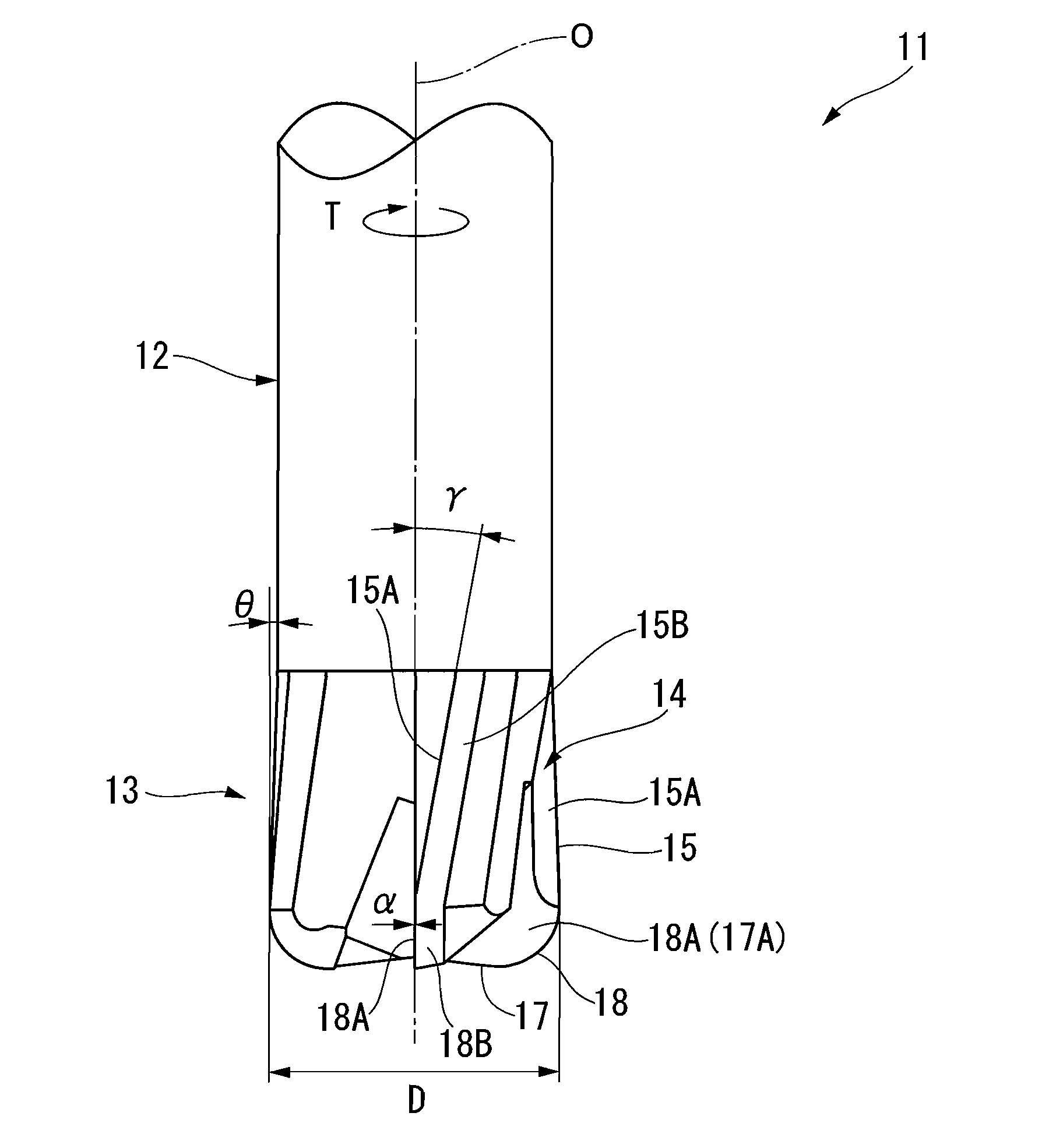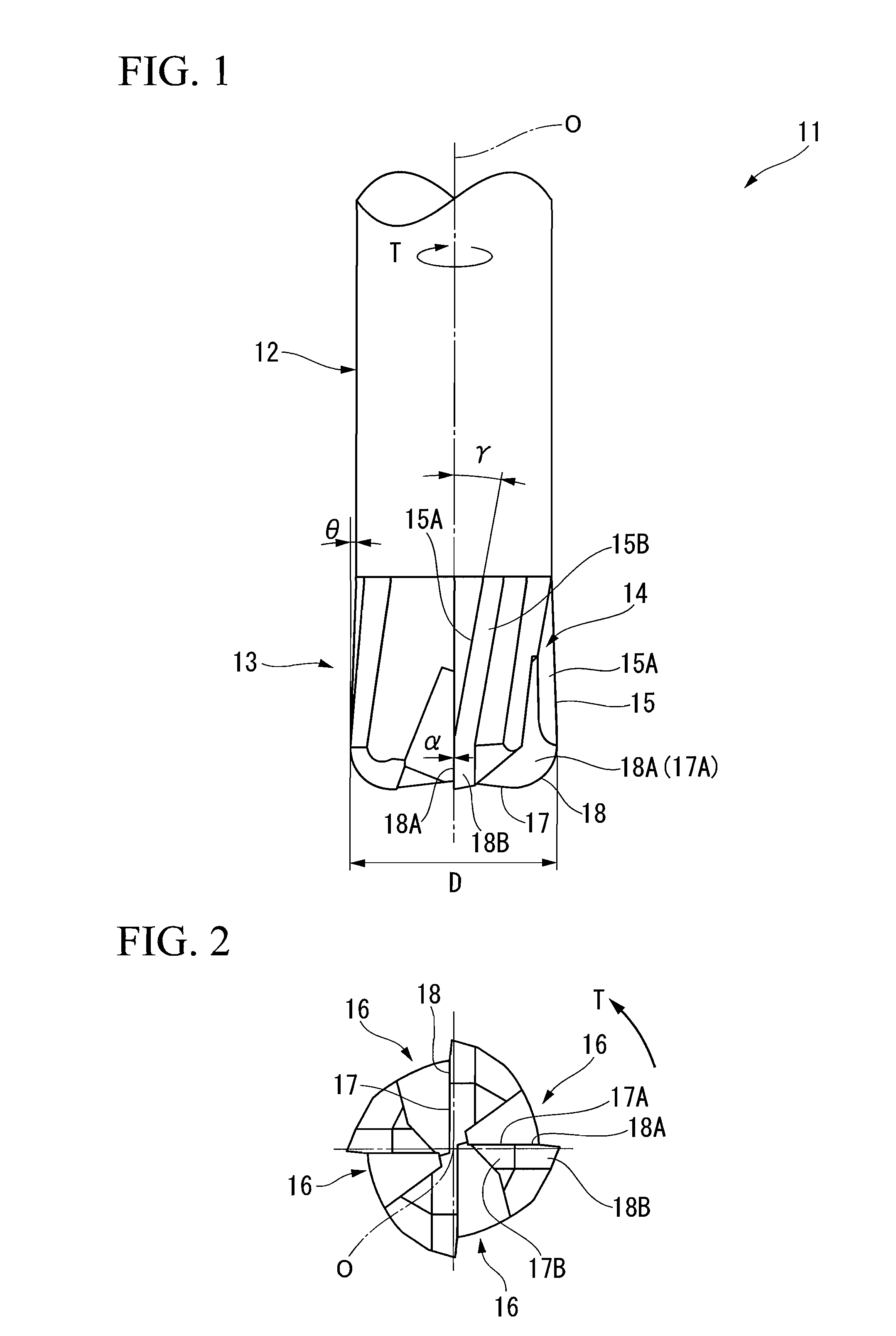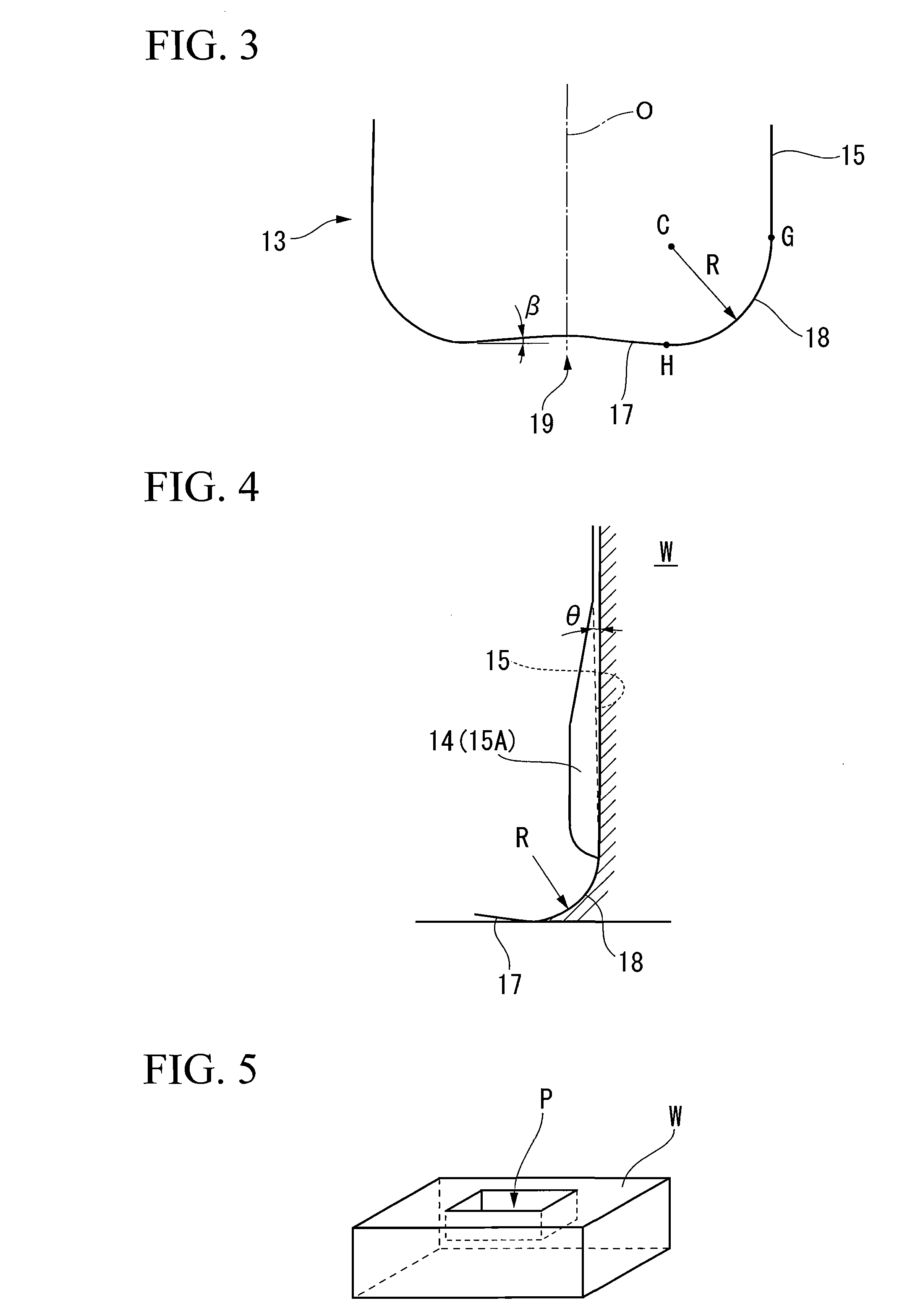Radius end mill and cutting method
a cutting method and radius end mill technology, applied in shaping cutters, metal-working machine components, manufacturing tools, etc., can solve the problems of increasing the cutting edge resistance, hardly ejecting chips from the groove easily, and missing and chipping of the cutting edge, so as to prevent the vibrating of the radius end mill, reduce the cutting resistance of the cutting device, and smooth the surface of the material
- Summary
- Abstract
- Description
- Claims
- Application Information
AI Technical Summary
Benefits of technology
Problems solved by technology
Method used
Image
Examples
Embodiment Construction
[0029]An embodiment of the radius end mill of the present invention will be explained with reference to attached figures. In each of FIG. 1 to FIG. 3, the embodiment of the radius end mill of the present invention is disclosed. In FIG. 4, angle parts and an outline part of a material to be cut is disclosed when the pocket is formed in the material using the radius end mill of this embodiment.
[0030]An end mill body 11 is made of solid material such as ultrahard alloy. As shown in FIG. 1, the end mill body 11 is formed like a cylindrical solid column center on an axis O. A part (upper part of the end mill 11 shown in FIG. 1) of the end mill body 11 located close to a terminal end thereof is provided with a shank portion 12 which is for attaching the end mill body 11 to an end of a main shaft of a machine tool. A part (on the lower part of the end mill 11 shown in FIG. 1) of the end mill body 11 located close to a distal end thereof is provided with cutting edge portion 13.
[0031]The cu...
PUM
| Property | Measurement | Unit |
|---|---|---|
| rake angle | aaaaa | aaaaa |
| angle | aaaaa | aaaaa |
| twist angle | aaaaa | aaaaa |
Abstract
Description
Claims
Application Information
 Login to View More
Login to View More - R&D
- Intellectual Property
- Life Sciences
- Materials
- Tech Scout
- Unparalleled Data Quality
- Higher Quality Content
- 60% Fewer Hallucinations
Browse by: Latest US Patents, China's latest patents, Technical Efficacy Thesaurus, Application Domain, Technology Topic, Popular Technical Reports.
© 2025 PatSnap. All rights reserved.Legal|Privacy policy|Modern Slavery Act Transparency Statement|Sitemap|About US| Contact US: help@patsnap.com



